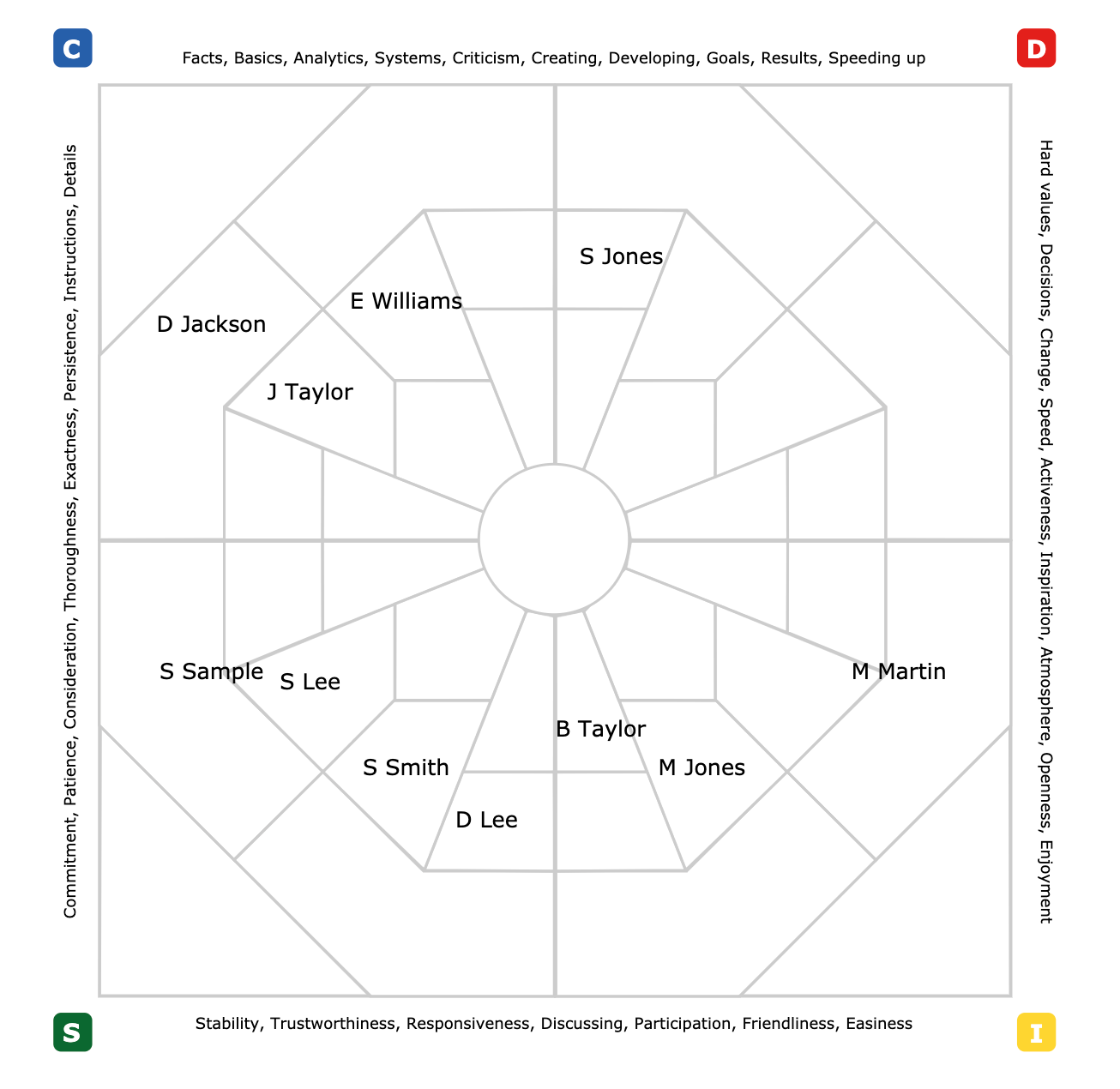Why do some teams run smoothly, while others have constant tension and misunderstandings?
If we're to be honest with ourselves, people issues impede our team's success. Miscommunication arises from differences in leadership and communication styles, and simply put, our preferred ways of doing things.
People issues
Smoothly running teams will often predict organizational success; while, dysfunctional teams are likely to highlight the barriers. Poor team performance leads to lost productivity, falling short of team goals, low employee morale, and higher turnover.
Identification of miscommunication and conflict, in itself, does not better the situation. The problem is knowing where to begin the fix.
How DISC helps
 Team leaders find it challenging to pinpoint the causes of dysfunction, making it difficult to move forward. DISC gives you information and clear speaking points to take those next steps.
Team leaders find it challenging to pinpoint the causes of dysfunction, making it difficult to move forward. DISC gives you information and clear speaking points to take those next steps.
You now have critical data to identify your team's style; your team's strengths, challenges, and overall dynamics. At the same time, you're able to identify individual team member's style and how each prefers to interact.
The information is grounded; it's based on each team member's self-assessment. You are telling each other how you prefer to interact, identifying your strengths and challenges, and what motivates and demotivates you.
In teams, DISC becomes a dialoguing tool; providing simultaneous feedback to all team members. It provides a non-judgmental language to discuss next steps; specifically, ways to recognize and utilize differences and how to make effective adjustments to improve your interactions.
Leading your team better

All teams have their own strengths, challenges, and unique dynamics. It's important, as a leader, to understand how you prefer to lead; how you motivate your team and how to tap into your team's strengths and develop areas that may be a challenge.
Leaders can use the DISC results to recognize the unique preferences of their employees and make better decisions on on how to best lead them. For example, are you assigning responsibilities and tasks effectively? What if you know which of your employees prefer to work independently and which ones are a better fit for handling the details and making sure mistakes are minimized?
Understanding what motivates, as well as demotivates, your employees creates a better work environment.
Motivating for your D-styles
- Be ready with clear solutions and options
- Get to the point and move quickly
- Acknowledge their achievements
- Provide opportunities to have control
- Avoid chit chat
- Let them speak
Motivating for your I-styles
- Let them speak and show enthusiasm
- Spend time on non-essentials; focus on person
- Support their ideas as positively as possible
- Keep it brief and don't overuse data
- Use phone, virtual, or in person for interactions
- Avoid need for follow-up if possible
Motivating for your S-styles
- Take it slow; don't rush them
- Build trust and rapport
- Lay out clear step-by-step plans and provide support
- Give them time to elicit opinions
- Check in to make sure they are okay
- Provide stability
Motivating for your C-styles
- Be prepared to answer their questions with details and facts
- Keep it formal
- Consider written communication over phone or in-person
- Acknowledge their expertise
- Provide opportunities to focus
- Provide clear and logical instructions
Knowing each other better
 As team members, we share the overall team's goals, but how we get there is subject to our preferences. Some of us prefer to move quickly and assume risks; while others prefer to work collaboratively and carefully. Some of us need clear, mutually agreed plans, while others want the ability to make their own decisions.
As team members, we share the overall team's goals, but how we get there is subject to our preferences. Some of us prefer to move quickly and assume risks; while others prefer to work collaboratively and carefully. Some of us need clear, mutually agreed plans, while others want the ability to make their own decisions.
DISC helps your team members identify each other more effectively. It reminds you, as an I-style, your C-style colleague likely prefers a detailed email over you rushing into their office to excitedly share your abundance of new ideas. If you're a D-style, you need to remember to slow it down and offer benefits to a solution with your S-style.
Remember, It's not about changing who you are, but making key and temporary adjustments to best fit the interaction. Your fellow colleagues will be more likely to respond positively, and in the end, you'll get what you need out of the interaction.
Time will not be wasted. Managing people problems enables your team to be more productive and focused on accomplishing goals.
 on our Extended DISC® Team and Individual Assessments today!
on our Extended DISC® Team and Individual Assessments today!
